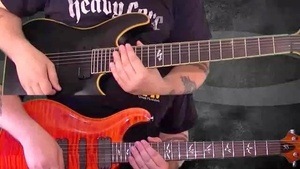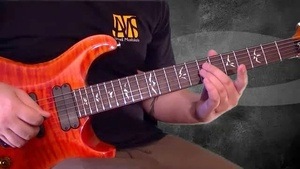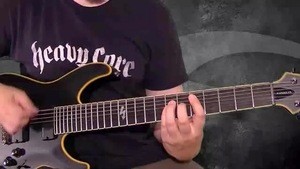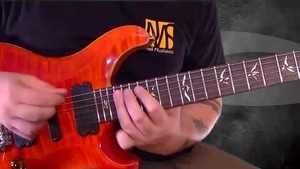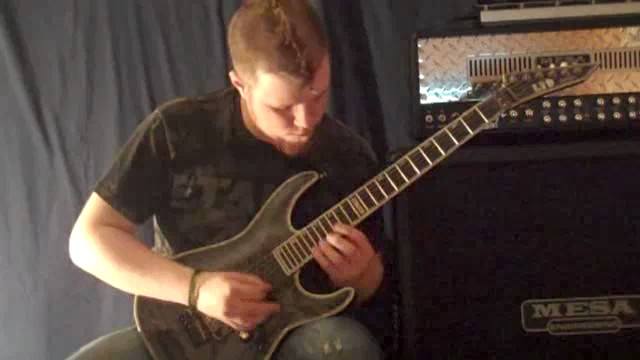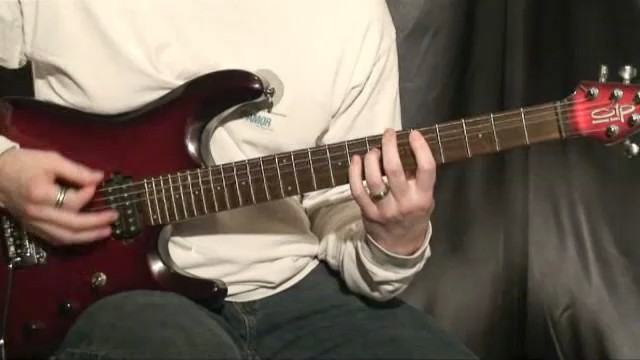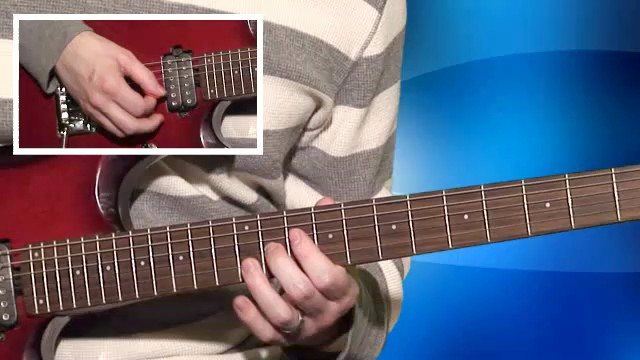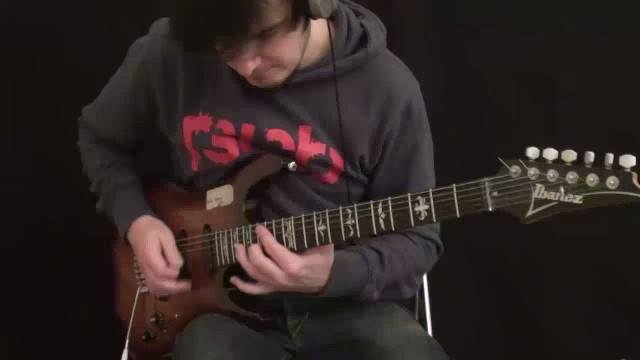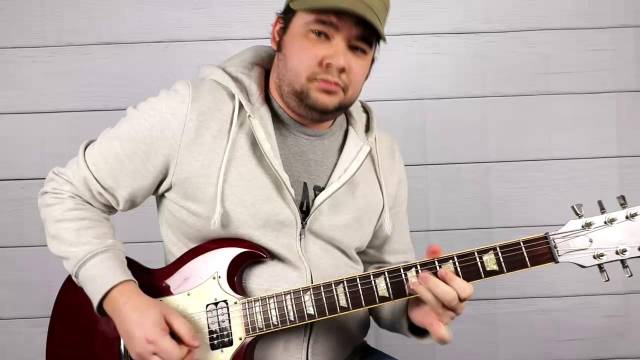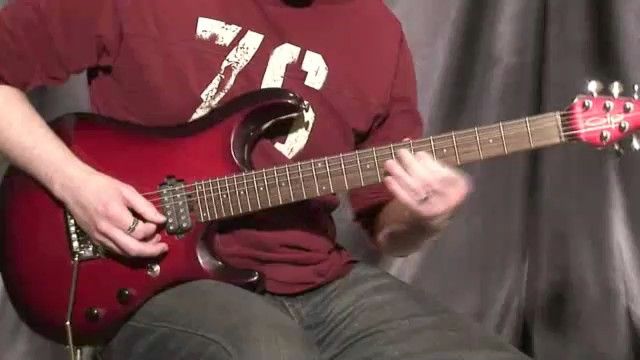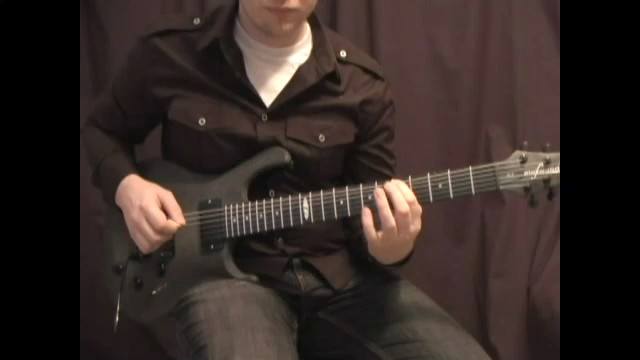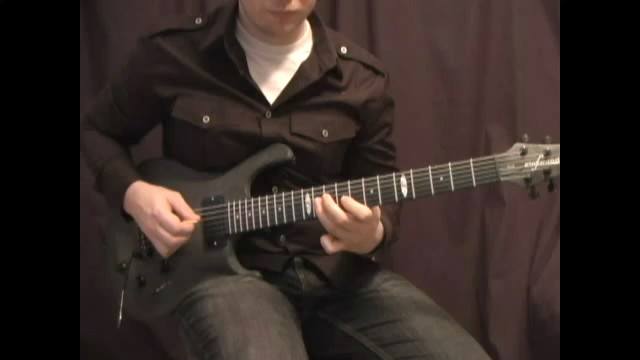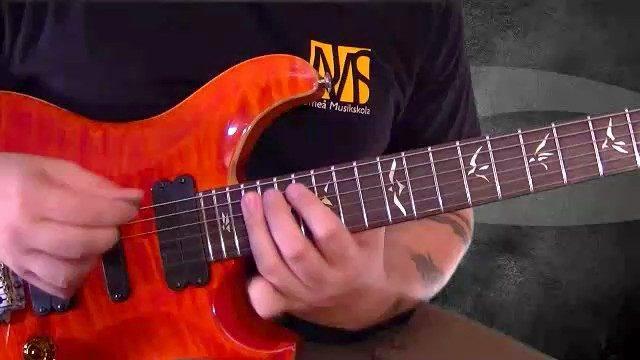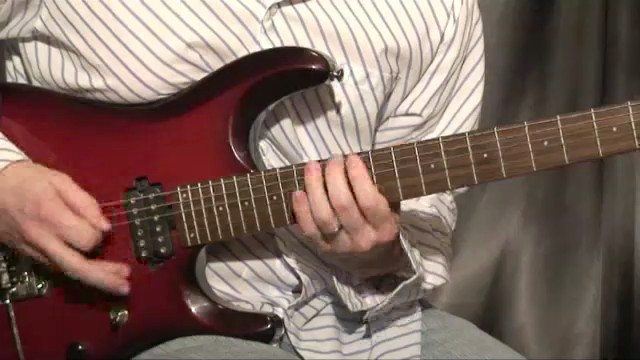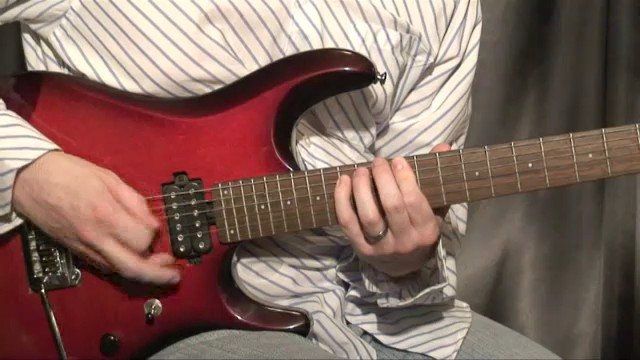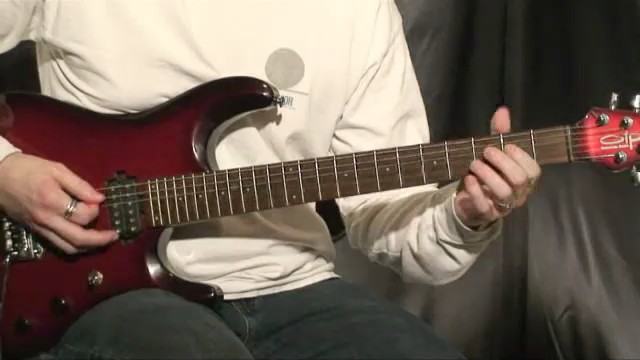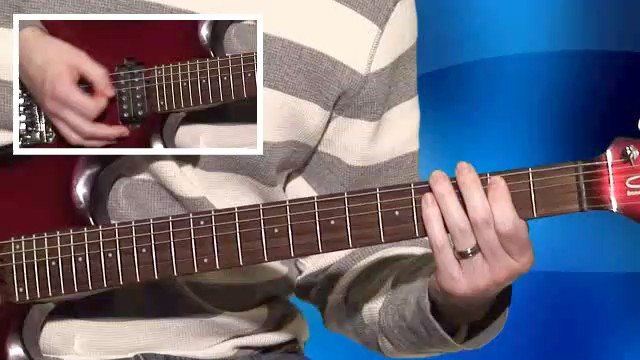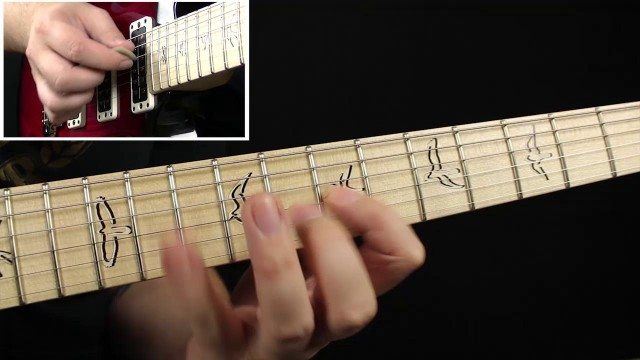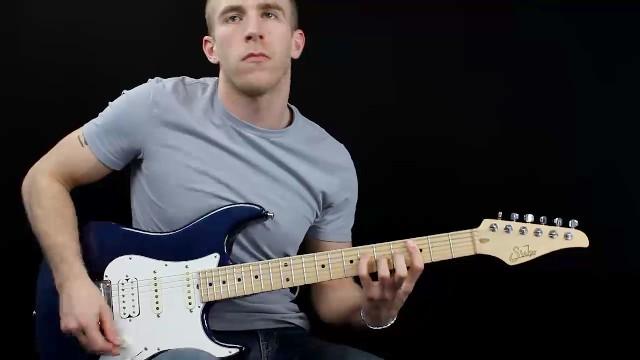Get set, ready, GO!
In this first event, we’ll look at the main 6-string riffs in the tune, the main riff, the bridge, the chorus and the bridge leading in to the solo sections.
In the first riff, the key element is muting. Since you’re using two fingers on the 7th fret (which is a harmonic nodal point), every time you lift them off the string you will get a harmonic ringing out. First thing you should do is to NOT lift the fingers all the way off the strings. You should just ease the pressure of the fingers so that the strings are not depressed, but you should keep string contact at all times. Then, your index finger must be tilted and touching all the strings continuously, since that is what will mute those harmonics once you decrease pressure. This technique enables us to play the top part of the riff unmated, whilst at the same time palm mute the low E string. This is the same technique used in my Dividing Rhythm tutorial, to separate the rhythm into two distinct entities. However, that riff was not about lifting the finger to create silence in the top part. Rather we held everything down and let it ring, but the idea is the same.
The next thing we need to focus on is the picking pattern. As you can see everything is based upon triplets, and alternate picking. However, when sliding within the triplet pattern in the riff, we are actually sliding into a note, instead of picking it with a down stroke, thus leaving two upstrokes in a row. But you need to think that you are just “skipping” that down stroke and going back into the upstroke again to keep the continuity of the picking pattern. If you try to pick this riff with strict alternate picking in the sense that every single pick attack must be opposite the other, you will run into problems my friend! This way, you get consistency and ease of playing.
On to the next riff, this begins at bar 5. This really resembles the above mentioned Diving Rhythm tutorial in that we have one part of the riff ringing out for the duration of the bar, and one lower part riffing away with palm muting. So, if you haven’t already, you should check that tutorial out.
This riff modulates into the key of E major, while the main riff is in B minor. There is the exception of the F#7 in bar 8, which acts the dominant in B minor, so it's not "black and white" as far as key modulation goes, but in general we're dealing with two keys here, B minor and E major.
Worth noting here is that on the album recordings both this riff, and the last bridge part was recorded with two separate guitars. But live on clinics, and here at IG I play both guitars as one. Thus the separation will not be as crisp as on the recording. On the other hand, playing them as two separate guitars wouldn’t be much of a challenge for you, now would it!
So, once you’ve passed this first event, those of you with 7-strings at your disposal (or an urge to tune down) get going into event 2 for some down tuned seven string madness! Those of you with only the 6 strings shouldn’t feel left out. Come join the fun, and try transposing the riffs into Drop D for instance!

